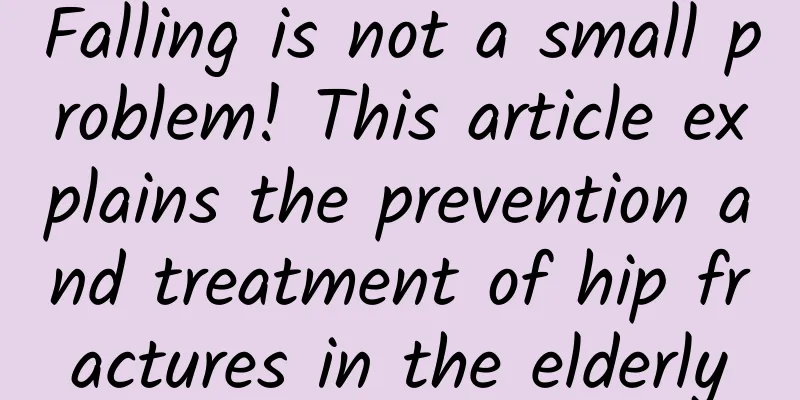Falling is not a small problem! This article explains the prevention and treatment of hip fractures in the elderly

|
On the eve of the Spring Festival in 2025, Grandma Luo accidentally fell down while taking care of her husband who had a stroke. At that time, Grandma was reluctant to come to the hospital, thinking that she would be fine after a few days of rest at home, but she couldn't stand up. During the Spring Festival, her family had no choice but to send her to Hunan Provincial Second People's Hospital (Provincial Brain Hospital) for treatment. Deputy Chief Physician Peng Kewu of the Department of Orthopedics and Sports Medicine performed a physical examination and imaging examination on Grandma Luo, and the CT scan showed a left hip fracture. The next day, Chief Physician Li Baojun, Director of the Department of Orthopedics and Sports Medicine, led a team of experts including Deputy Chief Physician Wu Ke and Deputy Chief Physician Peng Kewu to complete the operation for Grandma Luo. As a nurse in the anesthesia and surgery department, I have witnessed too many cases of hip fractures caused by falls. Today we will talk about this health hazard known as the "last fracture in life." Fragile "life fulcrum": Why are hip fractures more common in the elderly? Li Baojun, chief physician and director of the Department of Orthopedics and Sports Medicine, explained that the hip joint is the weight-bearing hub of the human body, but among people over 65 years old, 3-4 out of every 1,000 people suffer hip fractures. This high incidence is due to a double blow: osteoporosis makes bones like weathered rocks, which can be broken by a slight external force; and the deterioration of balance ability doubles the risk of falling. What is more alarming is that the incidence rate in women is 2-3 times that of men, and the rapid drop in estrogen after menopause, which leads to accelerated bone loss, is an important inducement. Prevent trouble before it happens: "micro-renovation" of home safety Prevention of fractures requires attention to details: laying non-slip mats and installing U-shaped handrails in the bathroom; installing induction night lights from the bedroom to the bathroom; removing debris in the corridor and hanging wires. In terms of diet, it is recommended to consume 800-1000mg of calcium (equivalent to 500ml of milk + 100g of tofu) every day, and vitamin D3 to promote absorption. Balance training such as Tai Chi and Ba Duan Jin can enhance proprioception. It is recommended to do it 3 times a week, 20 minutes each time. The road to rebirth after surgery: a scientific guide to recovery The golden recovery period after hip replacement surgery is the first 6 weeks. Postoperative rehabilitation varies from person to person and is gradual. In the first 3 months, you can get out of bed and walk appropriately. It is recommended to use a walker or crutches for protection and rest as the main thing. Nutritional support should follow the principle of "high protein, high fiber, low fat". Ingredients such as salmon, eggs, and broccoli are recommended. Psychological reconstruction is equally important. It is recommended that family members make a rehabilitation progress chart to enhance the patient's confidence with visual progress. It is important to be aware that about 30% of patients will experience postoperative delirium, which manifests as confusion and agitation. At this time, it is necessary to keep the environment quiet and cooperate with the doctor for drug intervention. Under the shadowless lamp in the operating room, we have witnessed the miracle of an octogenarian standing up again, and we have also witnessed the serious complications caused by refusing surgery. Li Yong, director of the Department of Anesthesiology and Surgery, and Yang Siyuan, head nurse, reminded that preventing hip fractures requires the mobilization of the whole family: children regularly take their parents for bone density tests, the elderly consciously use non-slip shoes, and the community improves barrier-free facilities. Remember, the key to fighting the "last fracture in life" is to prevent it before you fall and to persist in rehabilitation every day.
(Edited by Wx) |
<<: #千万IP创科普# Home first aid guide for epileptic seizures, four steps to safe response
>>: A few cups of green tea a day can protect your brain? But what about coffee?
Recommend
What are the core medications for patients with coronary heart disease? What are the drugs for controlling angina attacks?
A patient with coronary heart disease told Huazi ...
What are the side effects of electrotherapy for cervical erosion?
In daily life, cervical erosion is a very common ...
Itching pain in female vulva
What is the reason for itching and tingling of th...
Symptoms of infertility caused by miscarriage
After women find out they are pregnant, many will...
Glutinous rice foods are delicious, but why shouldn’t we eat too much?
Glutinous rice foods are mostly soft and sweet, a...
Can unopened expired canned food be fed to cats? How to tell if canned cat food is expired?
Since cat canned food is one of the foods cats of...
What size bra should I wear if my bust is 102
Upper bust: The bust measurement passing through ...
Leucorrhea with blood like menstruation
Due to the unique body structure of women, there ...
What is the cause of menstrual breast pain?
Menstruation is a common physiological phenomenon...
After drinking a glass of white wine, the young man was sent to the emergency room. This is a reminder for young people: Don’t risk your health!
At around nine in the evening, the phone rang urg...
Is the pregnancy rate high with weak yang intercourse?
For women who are preparing for pregnancy, it is ...
Is fasting required for 4D color Doppler ultrasound examination?
When you go to the hospital for some examinations...
Ovulation bleeding and treatment methods
I believe that ovulation bleeding is a disease th...
Implantation cooling on the third day after ovulation
After the woman's egg cell is taken out, if s...
Is breast nodule type 2 serious?
Are Type 2 breast lumps serious? Type 2 breast hy...









